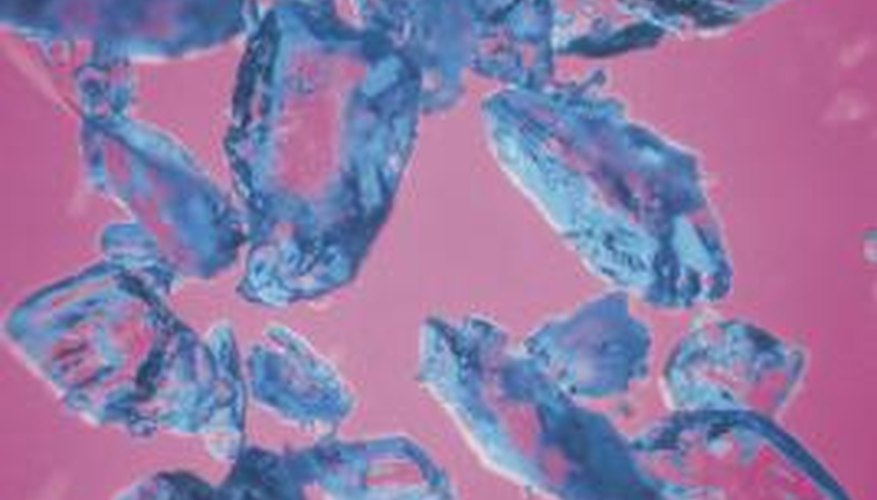Copper sulphate, otherwise known as bluestone, is sometimes used in swimming pools as an algicide. Use copper sulphate in swimming pools only as a method to control growth of algae; it should not be used as part of your regular pool chemical treatment. By properly assessing the swimming pool's alkalinity, you can add the appropriate amount of copper sulphate to a swimming pool to control algae growth.
Test your pool water to determine the total alkalinity. Follow the manufacturer's directions closely when using the test kit to get accurate results. You need to know the total alkalinity to determine how much copper sulphate that you should put into the pool.
Use the chart located on the University of Kentucky's website for bluestone (see Resources) to determine how much copper sulphate you should add to the pool, based on the total alkalinity of your pool water. For example, match your pool's alkalinity to the figures on the left side of the chart under the header "Total Alkalinity." Then, scan over to the number on the same row on the right side of the chart under the heading "Copper Sulfate Applied." This is the amount of copper sulphate you should add to your pool, based on the pool's total alkalinity. Do not add any copper sulphate to your pool if your alkalinity is below 50 ppm or above 200 ppm. If it falls somewhere in the middle of that range, use between 0.907 and 2.72 kg (2 and 6 lbs) of copper sulphate, depending on the size of your swimming pool. Follow the manufacturer's directions for the specific brand of copper sulphate that you use.
- Copper sulphate, otherwise known as bluestone, is sometimes used in swimming pools as an algicide.
- Use the chart located on the University of Kentucky's website for bluestone (see Resources) to determine how much copper sulphate you should add to the pool, based on the total alkalinity of your pool water.
Put on protective gloves and eye wear.
Mix the copper sulphate with enough water for the blue crystals to dissolve. Keep adding water until all of the crystals have dissolved. Some copper sulphate is sold in a jar to which you can add water. If the copper sulphate comes in a bag, then just add it to a glass mixing bowl or a bucket to mix the crystals with water.
- Put on protective gloves and eye wear.
- Mix the copper sulphate with enough water for the blue crystals to dissolve.
Pour the solution into a plastic spray and pump bottle, the kind that you would use to apply liquid fertiliser to a garden.
Spray the solution into the swimming pool, completely and evenly covering the water with the copper sulphate solution.
TIP
Only use copper sulphate at the beginning and end of the swimming pool season. It may take a few days for the algae and water to clear up, so don't add more thinking that it didn't work. Also, if you use too much copper sulphate, you could stain your swimming pool, so only use the recommended amount.
WARNING
Beware of products that claim that copper sulphate will control microorganisms. Copper sulphate does not eliminate the need for chlorine, bromine, or other pool sanitisers.
